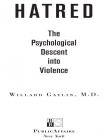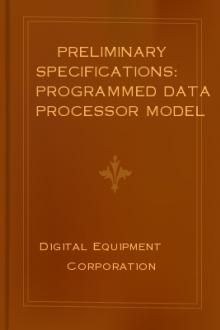Hatred, Willard Gaylin [best ebook for manga txt] 📗

- Author: Willard Gaylin
Book online «Hatred, Willard Gaylin [best ebook for manga txt] 📗». Author Willard Gaylin
In a major urban area of some twenty million people, like New York City, where the number of deranged wandering the streets must run into the hundreds of thousands, what is truly amazing is how few acts of violence are committed by them, not how many. There are probably fewer acts of violence committed by the psychotics that walk among us than the number of violent acts of road rage committed by the “normal.” Certainly fewer violent crimes are committed by the mentally ill than the acts of violence involving drugs, crime, and sex. In my years, admittedly few, of practicing in an institution, I was attacked by a patient only once and that was not by a psychotic. Most psychotics suffer internally and suffer in isolation.
The main danger with psychotics is that they are suggestible and manipulable. They are susceptible to the provocative language of extremists—the radical elements of the animal rights group and the right-to-life groups seem to attract the most psychotics. These causes have been adopted by paranoid schizophrenics to liberate them from the isolation of their personal demons. Finding affirmation in a group rationalizes their delusions, making them feel less crazy.
Although psychotics contribute to a very small segment of hate crimes, the leaders of hate groups are unlikely to be psychotic. Remember that the psychotic is a shattered individual who has a tenuous hold on reality. He is obsessed and preoccupied with just keeping himself together. He is a loner who eschews human contact. He can do harm to others, but for the most part he, himself, is the greatest victim of his disease.
The psychopath, in contrast, is a manipulator and a user. He perceives others as a predator views prey. Unhampered by a conscience or feelings of shame or guilt, he exploits people as instruments to serve his personal gratification. He is a con artist and a grifter, a mugger and a rapist. While some acts of hatred are a product of the blurred vision of the psychotic, more are products of the distorted behavior of the psychopath.
The Psychopath
When we first moved to New York City from the less sophisticated environs of Ohio, my wife would read with anxiety the headlines in the tabloids, to which we had not been previously exposed. She would be particularly concerned with the group that came under the heading: “Model Boy Kills Mother!” She would ask me, as a budding psychiatrist, how that could happen. I explained that by definition anybody who killed his mother was not a “model boy.” Invariably these model boys had evidenced less than model behavior in their past. Most were psychopaths.
Hate groups are not societies of psychotic or borderline psychotic individuals. Their members are more likely to be people who have been labeled by psychiatrists as either psychopaths or sociopaths. The psychopath is a severely flawed individual who illogically, but rationally, has been excluded from the category of the mentally ill. Illogically, because the mental distortions of the psychopath are in many ways as extreme as those of the schizophrenic. Rationally, however, because society could not function if psychopaths were allowed the privileges of the sick role. Given the kind of damage to their personhood they evidence and the actions to which this may lead, psychopaths will constitute the majority of chronic criminals. They must be held accountable, so psychiatrists have considered them “abnormal,” but not ill.
The psychopath is identified by the absence of a clearly defined moral system, one of the essential features that distinguishes Homo sapiens from lower animals. The psychopath is described as having no conscience mechanisms. Psychopaths operating without conscience or with severely limited ones are fairly prevalent, if not in our own lives, in the newspapers and television. They are found among the thugs who earn a living by knocking old ladies over the head with a lead pipe to get the meager contents of their purses; those who sell crack cocaine to indulge their penchant for the easy life; the corporate executives who in the face of negative research findings encourage the public to purchase carcinogenic substances like cigarettes; the Ponzi artists of Wall Street; the despots of the African states that starve their own people to accumulate Swiss bank accounts to support their decadent existences.
Obviously, “psychopathic,” like “paranoid,” is a term that represents a spectrum of people with varying degrees of pathology. The label indicates the presence and nature of the pathology, not necessarily the degree. Just as there are degrees of paranoia, there are degrees of psychopathy. When racism was rampant in the American South, not all racists became members of the Klan. And when the Klan’s battle against integration was clearly lost, not all of them remained as active and aggressively obsessed with hatred as the Eastview 13 Klavern in Birmingham, Alabama. Indeed, when the time came to make a “political statement” on Sunday morning, September 15, 1963, not all members of this Klavern would have had it in them to throw a dynamite bomb into the 16th Street Baptist Church, killing four innocent girls aged eleven to fourteen. The kind of hatred exemplified here, and the history of involvement in hate groups later revealed in the bombers, suggest that they fit the profile of psychopaths, evidenced through a lifetime of antisocial activities.
The term “psychopath” is usually reserved for the chronic criminal type who is incapable of seeing the wrong in what he does. Since he is incapable of feeling guilt or shame, he is equally incapable of displaying true remorse, even when it is to his advantage in a court of law. Unless psychopaths are consummate





Comments (0)